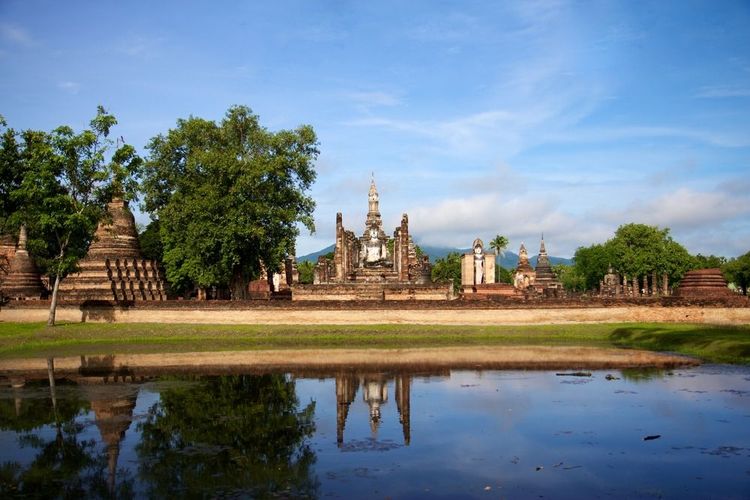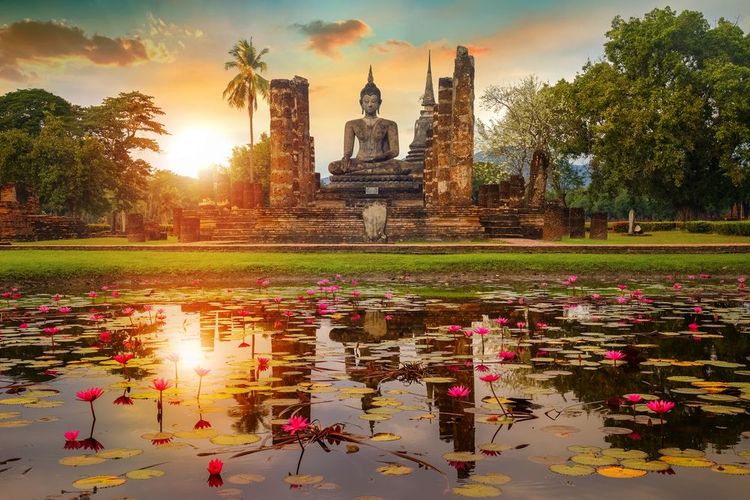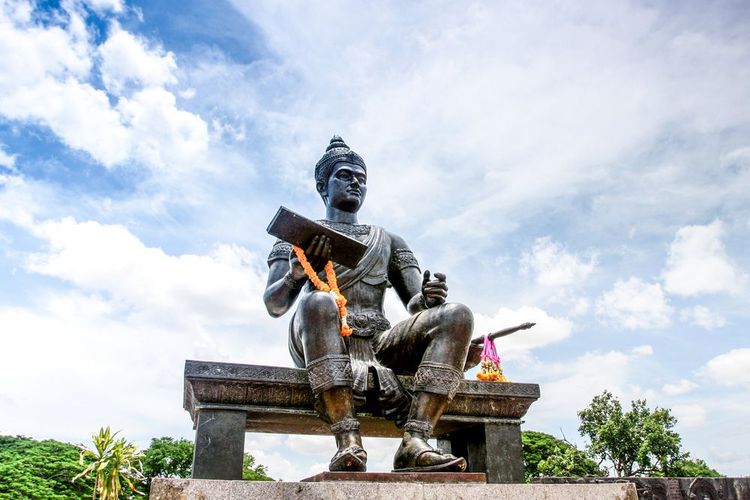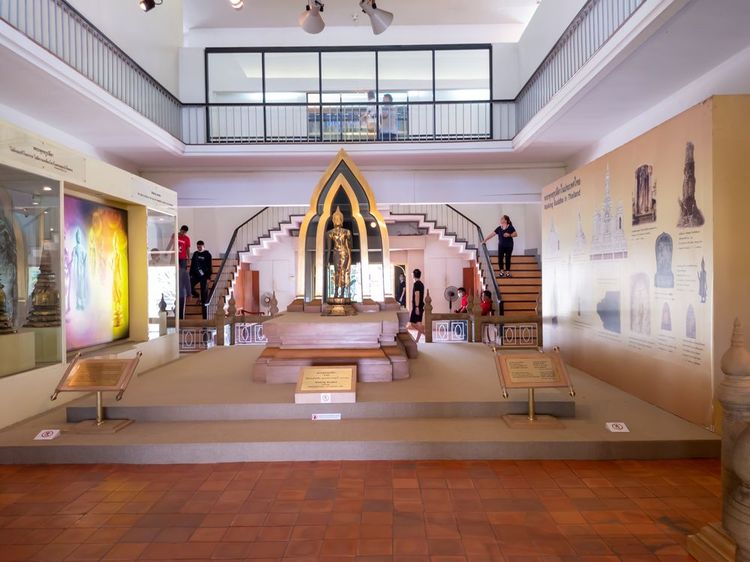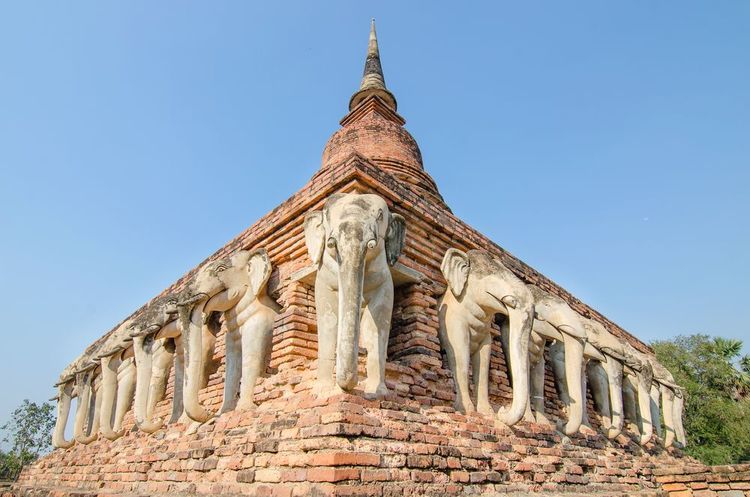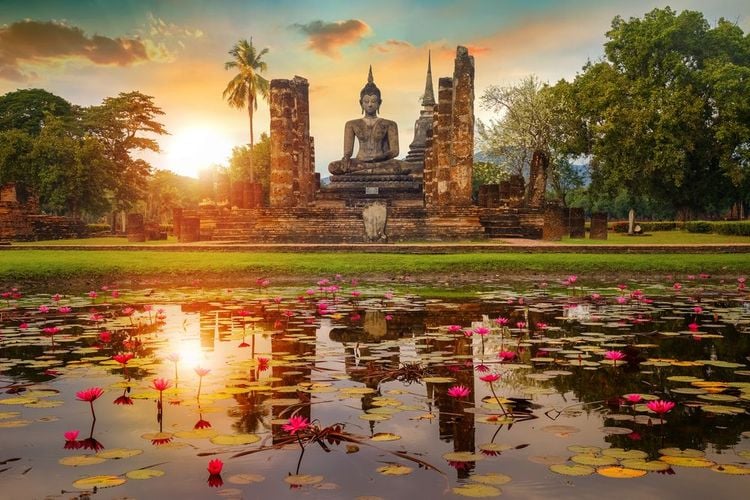Sukhothai Historic Park was the capital of the Kingdom of Sukhothai, which was established in north-eastern Thailand in the 13th century. Sukhothai and the surrounding region were part of the Khmer Empire until the early 13th century. When the Khmer Empire was in decline, the local population called Siam revolted and took power under King Si Inthrathit. Thus Sukhothai became the first kingdom. It was a golden period in Thai history. The kingdom lived up to its name, Sukhothai, which means "the dawn of happiness".
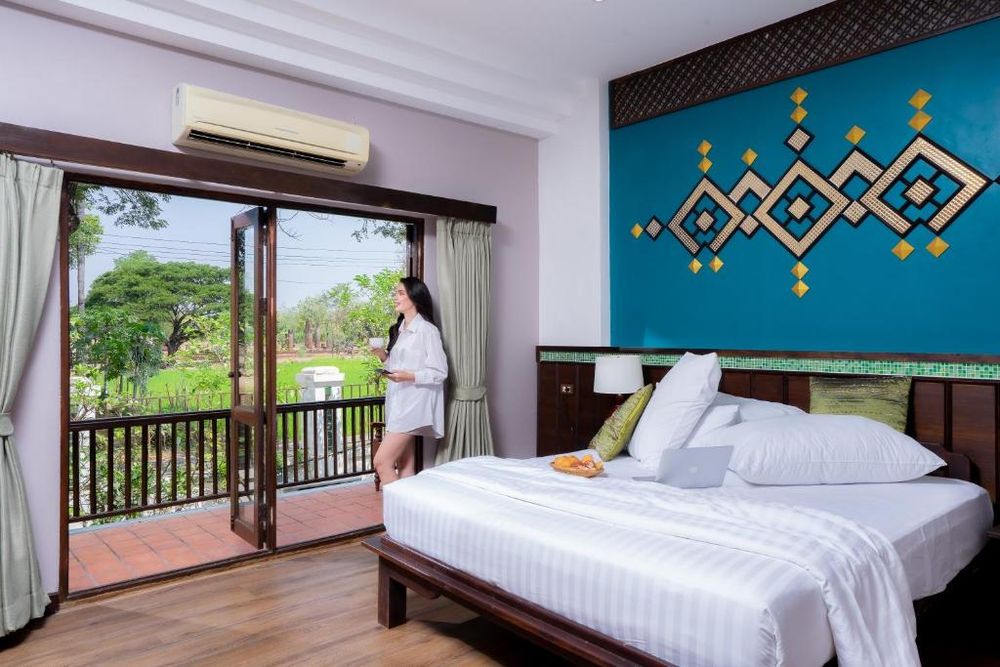 Thailand
Thailand

